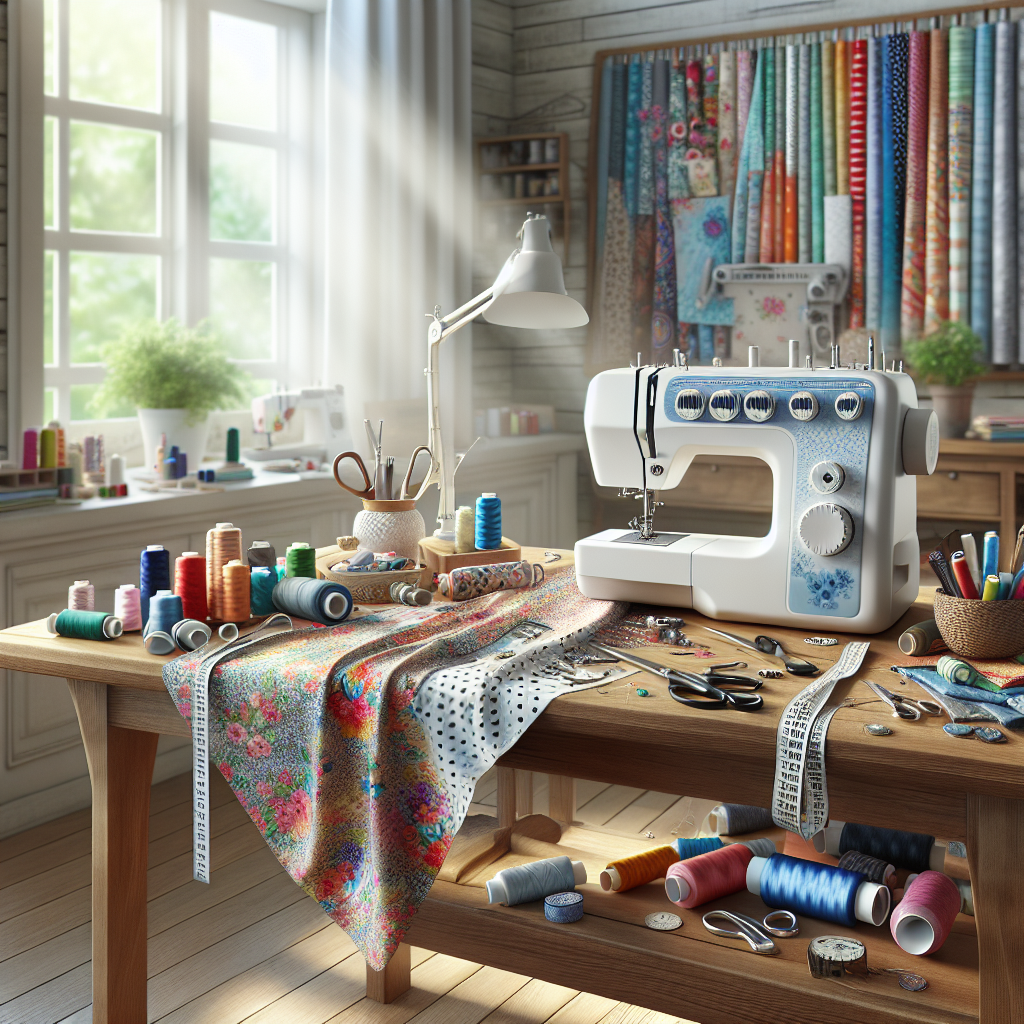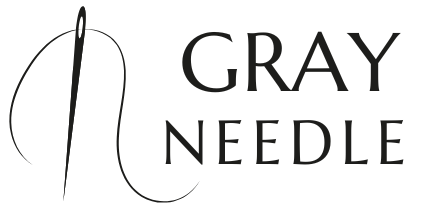Are you ready to turn your passion for sewing into a source of income? With the rise of online marketplaces, there has never been a better time to explore sewing projects to sell online. Whether you’re a beginner or a seasoned stitcher, the ability to create unique, homemade items can be both fulfilling and profitable.
To embark on this exciting journey, it’s essential to identify projects that not only showcase your skills but also appeal to potential buyers. Popular items include:
- Handmade Bags: From tote bags to stylish purses, there’s a vast market for creative designs.
- Home Decor: Cushions, table runners, and curtains can add a personal touch to any home.
- Fashion Items: Custom clothing, including dresses and accessories, can attract fashion-forward customers.
In addition to choosing the right projects, understanding your target audience and marketing your products effectively will significantly impact your success. Remember, the key is to create items that not only reflect your style but also meet the demands of the market.
Are you excited about the possibilities? Visit our website to learn more and get started today! Click here.
Identifying Trends in Online Sewing Markets

Understanding the current trends in online sewing markets is crucial for any aspiring seller. Staying updated with what’s popular not only helps in creating desirable products but also ensures you remain competitive in a bustling marketplace. Here are some effective strategies for identifying trends:
- Social Media Insights: Platforms such as Instagram and Pinterest are goldmines for inspiration. Following hashtags related to sewing can reveal what projects are gaining traction.
- Online Marketplaces: Websites like Etsy and Amazon Handmade allow you to see bestsellers in various categories. Analyzing these listings can provide insight into what consumers are currently buying.
- Industry Blogs and Forums: Engaging with the sewing community through blogs, forums, and newsletters can keep you informed about emerging trends and popular materials.
Moreover, paying attention to seasonal changes can also influence what types of items are in demand. For instance, cozy, warm projects may sell well during the fall and winter months, whereas lightweight fabrics and summer clothing will be more appealing in warmer seasons. By continually researching and adapting to these trends, you can ensure that your sewing projects align with what potential customers want.
Creative Ideas for High-Demand Sewing Projects
When it comes to boosting your income through sewing, focusing on high-demand projects is essential. Here are some creative ideas that can capture interest and lead to profitable sales:
- Reusable Tote Bags: With sustainability on the rise, eco-friendly tote bags are in high demand. Customize them with unique fabrics and designs to stand out in the market.
- Face Masks: Although the peak demand has shifted, stylish and personalized face masks remain popular for those looking for unique options.
- Pet Accessories: From stylish collars to cozy pet beds, pet owners are always on the lookout for trendy and functional items for their furry friends.
- Home Décor Items: Handmade cushions, curtains, and table runners can add a personal touch to any home. Consider using seasonal or themed fabrics to attract buyers.
- Baby Products: Items such as diaper bags, bibs, and blankets are perennial favorites among new parents. Focus on soft, safe materials that appeal to this market.
By tapping into these popular niches, you can create products that not only meet consumer needs but also allow you to express your creativity. Remember, the key lies in finding a balance between market demand and your personal style, ensuring that your sewing projects are both profitable and enjoyable to create.
Tips for Pricing Your Handmade Sewing Items

Determining the right price for your handmade sewing items can be challenging, yet it is crucial for ensuring profitability. Here are some essential tips for pricing your products effectively:
- Calculate Your Costs: Begin by tallying up all expenses associated with your items, including materials, tools, and any overhead costs. This gives you a solid foundation for pricing.
- Consider Your Time: Don’t forget to factor in the time spent on creating each piece. Determine an hourly wage that reflects your skill level and the time invested in the project.
- Research Competitors: Look at similar items from other sellers to gauge market prices. This helps you position your items competitively while ensuring you don’t undervalue your work.
- Choose a Pricing Strategy: You can opt for a cost-plus pricing model, adding a markup to your total costs, or a value-based pricing approach, which considers the perceived value of your items to customers.
- Test and Adjust: Don’t be afraid to test different price points. Monitor sales and customer feedback to make necessary adjustments to your pricing strategy over time.
By following these tips, you can set prices that reflect the quality and craftsmanship of your sewing projects while appealing to potential buyers. Remember, a well-priced item not only covers your costs but also highlights the value of your unique creations.
Marketing Strategies for Selling Sewing Projects

Once you’ve created and priced your handmade sewing projects, the next step is to effectively market them to reach potential customers. Here are some effective marketing strategies for selling sewing projects:
- Utilize Social Media: Platforms like Instagram, Pinterest, and Facebook are excellent for showcasing your creations. Share high-quality images, behind-the-scenes content, and engaging stories to attract followers and potential buyers.
- Create a Website or Blog: Establishing a personal website or blog allows you to showcase your portfolio, share tutorials, and connect with your audience. It serves as a central hub for your brand and can enhance your credibility.
- Leverage Email Marketing: Build an email list of interested customers and send regular newsletters featuring new products, sales, and exclusive offers. This helps maintain customer engagement and encourages repeat purchases.
- Participate in Local Markets and Craft Fairs: Setting up a booth at local events is a great way to connect with your community. It allows customers to see and feel your products firsthand, which can lead to immediate sales.
- Collaborate with Influencers: Partner with social media influencers who align with your brand to reach a broader audience. Influencer marketing can enhance your visibility and attract new customers who trust their recommendations.
By implementing these marketing strategies, you can effectively promote your sewing projects and increase your sales. Remember, consistency and creativity in your marketing efforts are key to building a loyal customer base.
Building a Community Around Your Sewing Business

Creating a successful sewing business goes beyond just selling products; it’s about building a community that shares your passion. By fostering connections with your customers and fellow sewing enthusiasts, you can create a loyal following that supports your business. Here are some tips for building a community around your sewing business:
- Engage on Social Media: Use platforms like Facebook and Instagram to interact with your followers. Ask for their opinions, share user-generated content, and respond to comments. This interaction builds a sense of belonging.
- Host Workshops and Events: Organize sewing workshops or virtual meet-ups where community members can learn from you and from each other. These events can help develop skills and reinforce connections among participants.
- Create a Newsletter: A regular newsletter can keep your community informed about new products, upcoming events, and sewing tips. Include a section for community highlights to showcase members and their projects.
- Start a Sewing Challenge: Encourage your community to participate in sewing challenges where they can share their creations. This promotes engagement and allows members to inspire one another.
- Establish a Forum or Group: Consider creating an online forum or group where sewing enthusiasts can share ideas, ask questions, and provide support. This can be a valuable resource for both beginners and experienced sewists.
By prioritizing community building, you not only enhance customer loyalty but also create a supportive environment that fosters creativity and inspiration. Visit our website to learn more and get started today! Click here.

